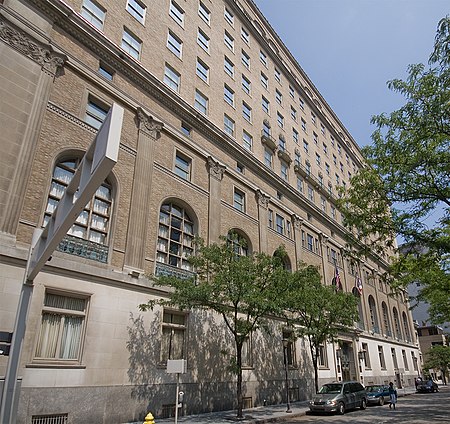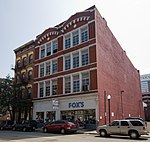Phoenix Building/Cincinnati Club

The Phoenix Building and Cincinnati Club are two historic buildings in downtown Cincinnati, Ohio, United States. The membership of these two clubs was chiefly Jewish.Located at 812 Race Street, the Phoenix Building was constructed in 1893, designed by prominent Cincinnati architect Samuel Hannaford, the same architect who designed Cincinnati's Music Hall, and intended as the home of an organization for Jewish businessmen. It was listed in the National Register on January 11, 1985, and it is also recognized as a historic landmark by the Miami Historical Preservation Association. It was built in the architectural style of the Italian Renaissance, featuring Tiffany Glass windows and purchased by the neighboring Cincinnati Club, located at 30 Garfield Place, in 1911. The Cincinnati Club later sold the building in 1983. It later became a fine dining restaurant 1988–2008, and continues as a private banquet facility. The Cincinnati Club operated as a hotel and private businessman's club was also built by Garber and Woodward, Frederick W. Garber's firm. The two properties are separate buildings and each are currently used as a banquet hall for private events.
Excerpt from the Wikipedia article Phoenix Building/Cincinnati Club (License: CC BY-SA 3.0, Authors, Images).Phoenix Building/Cincinnati Club
West Garfield Place, Cincinnati Central Business District
Geographical coordinates (GPS) Address Nearby Places Show on map
Geographical coordinates (GPS)
| Latitude | Longitude |
|---|---|
| N 39.104488888889 ° | E -84.514822222222 ° |
Address
West Garfield Place 58
45202 Cincinnati, Central Business District
Ohio, United States
Open on Google Maps










